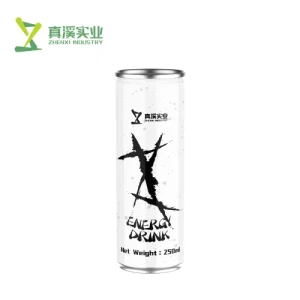On the one hand, reuse 250ml cans presents opportunities and challenges depending on context and application. When it comes to the beverage industry, single-use (recyclable) aluminum cans are king. Yet by investigating these reuse scenarios we gain insight into a range of sustainable practices.
From our perspective the material properties of aluminium will be key to its potential reuse firstly. 250ml aluminum cans have a long afterlife and do not oxidize. While having these benefits, widespread use in food and beverage applications is still rare due to reuse opportunities. It was the health and safety regulations that were on their side, single-use is sacred in ensuring no contamination. That being said, these cans can still be suitable for other non-food uses.
For example, an increased trend is the popularity of creative reuse project. The cans can be used for many things, plant pots are a popular one but also pen holders, and decoration lamps being some of them by the DIY enthusiasts. For instance a collaborative community art project in New York had artists collect used 250ml cans to create an installation made out of thousands of the containers withstood rude scratching imposed by admiring passers-by on their way for tickets. A photo of a project that took more than 5,000 cans to create shows that even large-scale upcycling efforts are going to need the ability for us all to go back into occasional disposable mode.
In terms of the environment, reusing 250ml cans also saves waste and reduces environmental impacts. According to the Aluminum Association, recycling one ton of aluminum saves 14,000 kWh—enough energy for an average home use over four years. While recycling is still widely practiced, creative reuse methods help reduce waste.

The 250ml can capitalizes on trends once more, finding new life in business and industrial applications. For instance, individual creators will be able to reuse sterilized and cleaned cans for storing and transporting small parts like screws or bolts. It provides an economically feasible option using already available material that lowers costs. This included a Texas small hardware business who found they cut their storage space by 10% when utilizing aluminum cans to organize parts.
The idea of upcycling extends the life cycle even more for 250ml cans. It basically converts trash into new and better objects. We came across a thoughtful company based in California that upcycles aluminum cans into designer jewelry. These fetch prices of from $20 to $50 per item at the strong independent store shelf; an impressive commercial potential for reuse of this in a single-use market.
The reuse potential of 250ml cans is affected by consumer behavior as well. Forty-two percent of people surveyed by a sustainability-focused nonprofit said that they reused aluminum cans in some form at home, These figures reflect that consumers are willing to reuse materials and embrace circular economy.
But he acknowledges the 250ml cans are difficult to reuse on a large scale. It takes a lot of work to keep things clean and safe, esp. in food & beverage applications. Security continues to be of paramount importance, along with considerations around regulatory compliance and consumer trust. In addition, the lightweight and small size of 250-ml cans reduce their refill potential in many applications to make recycling more relevant that running an efficient take-back system.
In other words, however tricky it may be to directly recycle 250ml cans to package drinks there is potential elsewhere for their re-using in a more circular manner. When you see creative projects, industrial repurposing and upcycling of these cans soon reveal those possibilities go way beyond their original use. Visit — HERE to for more information on the 250ml can.